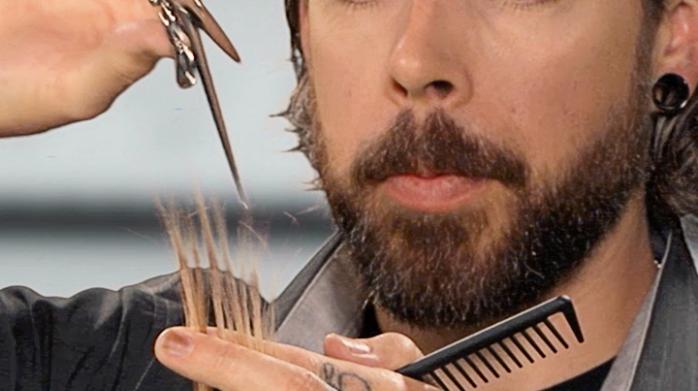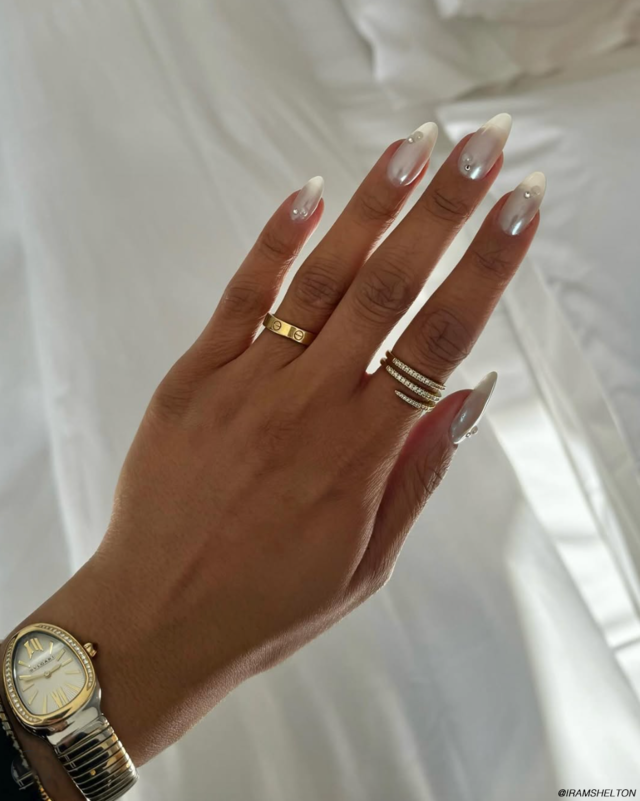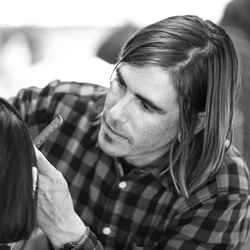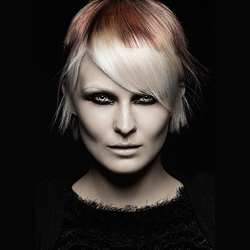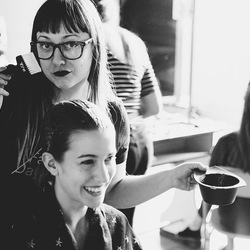Has a client or fellow stylist ever complimented you on how relaxed you look when cutting hair? We aren’t speaking about how you move around the chair; rather the way you move your cutting hand. How long do you want to continue to cut hair without your wrist, elbow and shoulder giving out on you? We strongly urge you to take heed of the tips Andrew will share with us on controlled cutting.
Let’s first speak about the benefits of a forward thumb/crane handle shear. A forward thumb shear puts us in a neutral, natural, ergonomic position that will have us feeling much better at the end of each and every day than if we were using an off set thumb positioned shear.
Try this with your offset shear: Place your offset shear in the opposite hand of your cutting hand and just hold on to it. Now, place your cutting arm at your side and then bring your elbow up and let your hand and wrist relax (the palm of your hand should naturally be facing downward). Where is your thumb right now? It is naturally relaxed and living about an inch or so away from your index finger. Poke the fatty muscle under your thumb – soft, right? Keeping that position, take your offset shear and place it in front of your cutting hand so the hole for your ring finger is positioned for the tips of your ring finger to naturally move into the finger hole. Do not move your fingers or thumb; just place the shear in this position. Keeping your thumb in the natural, relaxed position, place the shear onto the fingertips of your ring finger. Notice where the thumbhole is at this point...the thumbhole is sitting inside your hand resting against the fatty muscle under your thumb.

Now, without removing the shear from your ring finger, place your thumb into the thumbhole and poke again at the fatty muscle under your thumb and look at your wrist. The muscle is no longer soft, it has tightened up because you had to move your thumb back forcing your thumb into an unrelaxed position and the underneath of your wrist is tight. Common to what we may think, this is not a natural cutting position to be in all day. Now, keeping the shear on your ring finger, remove your thumb and relax. Where is your thumb now? It is back into the naturally relaxed position and living about an inch or so away from your index finger. The position of your thumb right now is where the thumbhole of a forward thumb/crane handle is positioned. You thumb does not have to move when placing the shear into your hand - resulting in an ergonomically correct position.
Think about the benefits of cutting all day long with a shear that is positioned for us to cut in a relaxed position and not feel the aches and pains in our wrists, elbows and shoulders. If you are placing more than the fingertips of your thumb and ring finger into the holes of your shear, the time to change that habit is now! This position forces you to use your entire hand to work the shear. Your thumb is the only finger that should move while cutting, so bring those fingers out so only the tips are in the holes. Keeping only your fingertips in the holes allows for much more movement and rotation of your shear. Andrew shows us how to practice moving only our thumb by horizontally placing the shear on your knee or on the palm of your other hand and moving your thumb only to open and close your shear.
We guarantee that if you practice this exercise you will break the habit of using both fingers to open and close your shear and be in much better control of your haircuts. Watch this how-to video as Andrew translates various shear positions that are easy to adapt to without contorting the wrist – Forward, Middle and Back.
Take the time to practice the movements so that you not only feel better every day but you look relaxed behind the chair. Your customers will notice and your fellow artists will notice how effortlessly you move through your cuts. Now that you have learned about scissor control, watch this video for hand and finger exercises that will add dexterity and keep you free from pain while cutting hair!
For more articles, tutorials and products visit Samvilla.com!
